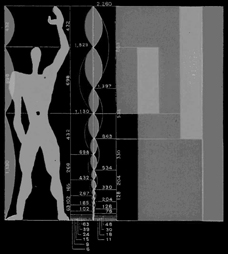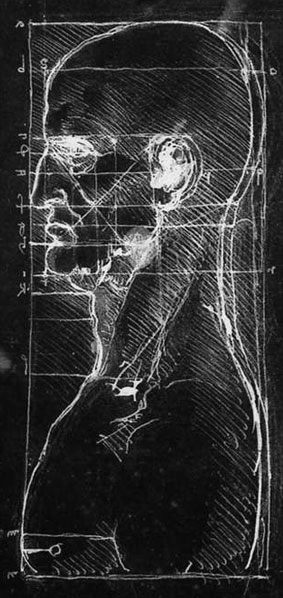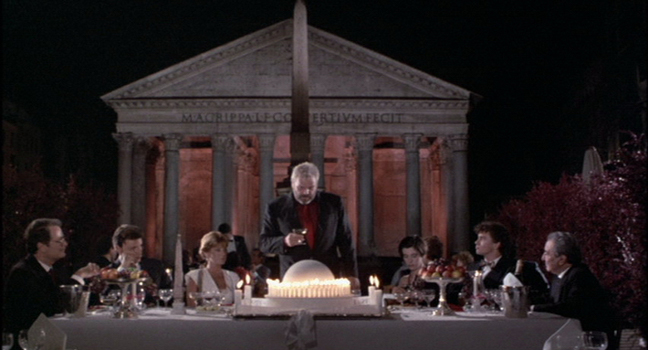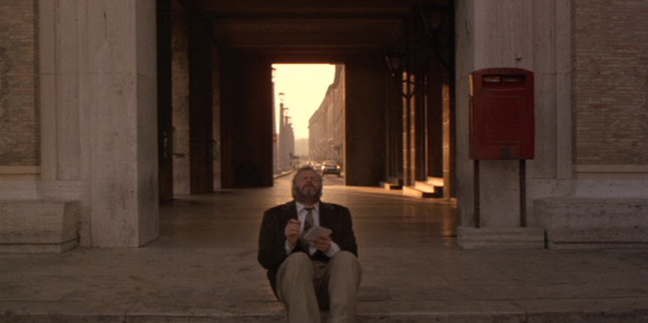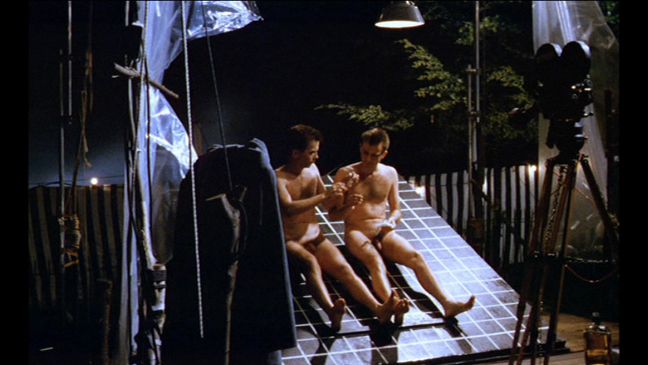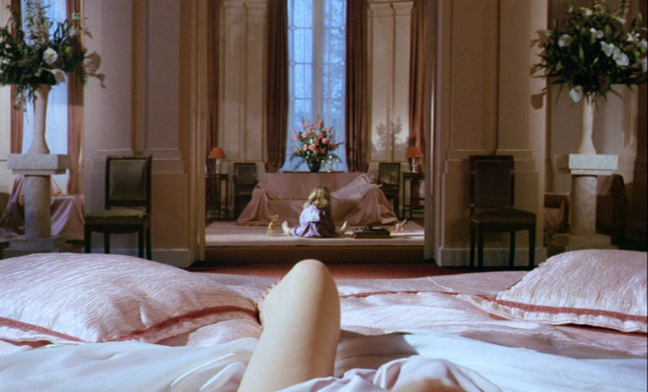In Belly of an Architect, Greenaway uses symmetry to portray the antagonistic relationship between Roman architecture and culture, and the protagonist Stourley Kracklite. The American arrives in Rome with an egotistical assertion of authority, intending to stage the exhibition of his hero Louis Etienne Boullée, and immortalize himself at the same time. However, Kracklite’s carnivorous coworkers, and a debilitating stomach illness quickly break his egoism and his authority. Greenaway uses Kracklite’s descent into madness and illness to comment on the fallacy of the ideally symmetrical Vitruvian Man. He contrasts the decay of the human figure (Kracklite), with the perpetual symmetry of classical architecture (Rome) - the eternal city.
Peter Greenaway and cinematographer Sacha Vierny disregard the typical “rule of thirds” framing and compose each scene with the characters as the central figures, flanked by balanced groupings of people or framed by doorways, arches or colonnades. There is always a direct relationship between the scale of the human: the creator, and that of the architectural backdrop: the object. However, Greenaway shifts the proportions between human and building as the movie progresses. At beginning of movie, Kracklite is most filmed in the foreground so that he dominates the scene and the architectural setting. The symmetrical architecture frames and emphasizes his centrality in the shot. Kracklite still views his position as one of authority. However, as Kracklite loses control over his exhibition and is overcome by illness, he descends into madness, and hopelessness. He is no longer the perfect human model, but asymetrical, describing the growth in his stomach according to platonic forms “Sometimes spherical, sometimes a cube or cone”. Accordingly, the perfectly proportioned architectural setting begins to dwarf Kracklite, such that large arches, staircases, and colonnades begin to dominate the scene. Moreover, Greenaway begins to film Kracklite from a distance. While he is still the central figure, he is much smaller than the rigidly symmetrical architecture. Greenaway uses this technique to represent Kracklite’s deteriorating symmetry in comparison to the unchanging proportions of Rome. This also represents the shift in authority from the architect to the architectural object and reflects the futility of Kracklite’s original egotism. Eventually Kracklite will fade away (die) and the architecture will remain - the sole and perfect character in the scene.
Greenaway uses a similarly symmetrical narrative structure for Belly of an Architect. The simultaneous events that make up the climax of the film: Kracklite’s death, the birth of his child, and the opening of the exhibition, mirror the conception of Kracklite’s child at the beginning of the film. This symmetry symbolizes the continuation of the lifecycle against the relative permanence of the built realm.

